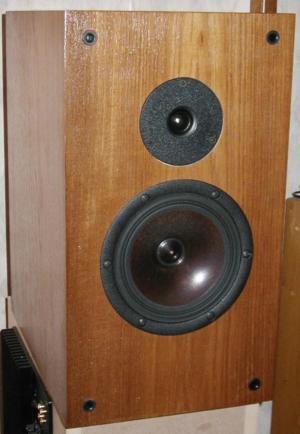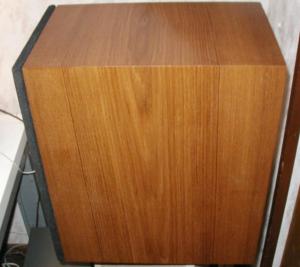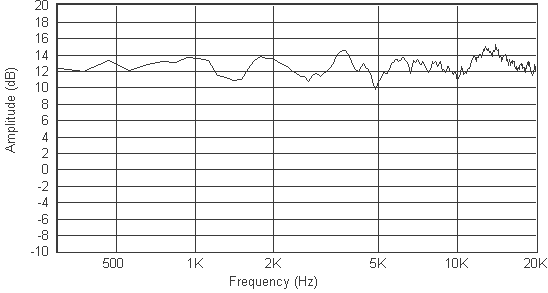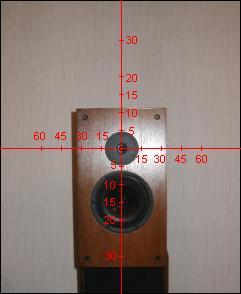

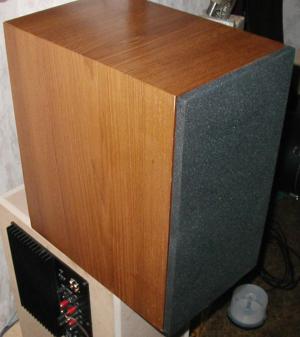
IntroductionThe Asterion is a larger 2-way speaker design using the Hiquphon OW I fabric dome tweeter along with the Vifa XT18WH 6.5" wood pulp midbass driver. I developed the Asterion following the completion of the Hyperions which were sold to a friend. It was hard to part with the Hyperions and when they were gone I immediately sought a replacement. The Asterion design is completely original and could be said to be the first design that I completed with little outside influence. They employ a 4th order Linkwitz-Riley crossover and an oversized cabinet which extends the bass response at the expense of power handling. Of the designs that I've built so far, the Asterions are definitely the best sounding speakers in the collection.Drivers
Vifa XT18WH09-08 The Vifa XT18WH is a 6.5" midwoofer with a wood-fibre cone and dustcap, multi-roll surround, low distortion magnet system and an airflow optimized chassis. It has been said that the XT driver was initially intended to be added to Scan-Speak's line of high quality woofers. Cabinet Design
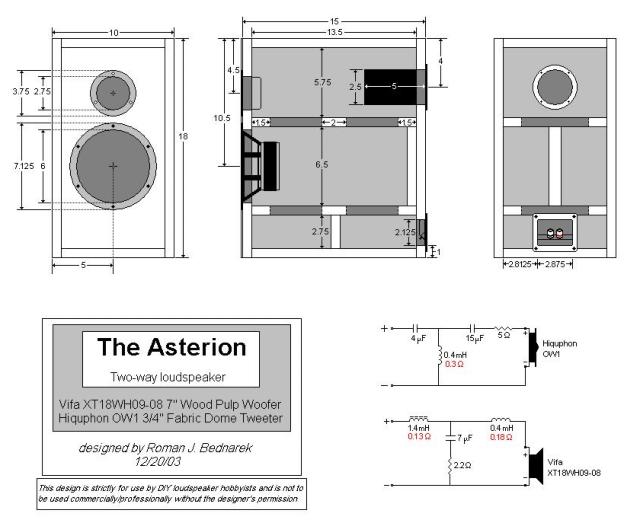
Crossover DesignThe Asterions use a 4th order Linkwitz-Riley crossover design with a crossover point at 2.5 kHz... actually it is a mixed slope filter which employs a shallower slope on the woofer to provide better phase integration on a flat baffle which puts the tweeter's acoustic center closer to the listener. The tweeter filter is a basic 3rd order electrical filter with a series resistor to adjust the tweeter level to match the woofer. I used a bar core inductor for the 1.4mH value used in the woofer filter in order to reduce the dc resistance of the circuit but I'm sure a heavy gauge air core inductor will do as well and may experience less saturation. The crossover was tuned to balance out the effects of cabinet diffraction by providing a compromise between off-axis and on-axis midrange flatness. As a result, some of the peaks and valleys that show up in the 2kHz-6kHz range are less prominent off-axis.Crossover update at bottom of the page [9/2009]PerformanceThe frequency response for the Asterion design is shown below. This measurement covers a response range of 20Hz to 20kHz and is spliced between nearfield driver/port measurements and 1 meter farfield gated measurements at 300 Hz. The gated measurement was taken at a mic height about 3" below the tweeter axis because I've found that the best phase alignment between the drivers occurs at this height and you can see more evidence of this in the off-axis response measurements given further down the page. The overall frequency response is flat within +/- 2dB approximately and would be flatter if it weren't for some of the diffraction effects that interfere with the on-axis response. According to this plot the f3 of this design is around 32 Hz which seems a bit low compared to the simulated enclosure response but it could be accurate because I didn't measure the T/S parameters of these drivers and they may be shifted enough to produce a deeper bass response in this cabinet. In any case the bass extension is very good with this design although the large enclosure means that it will take less power before the woofer will reach its excursion limits.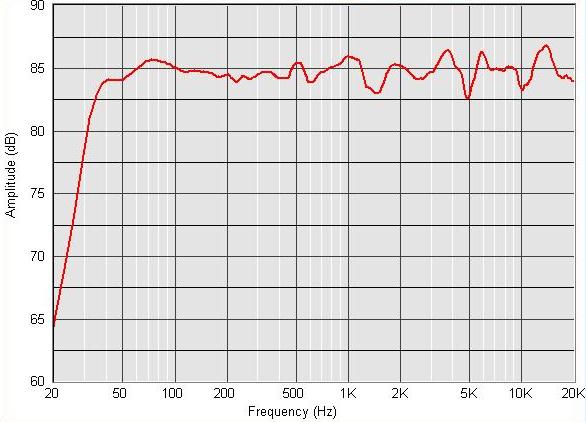
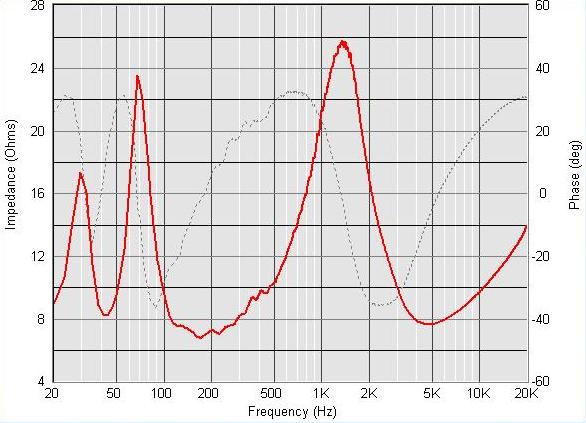
I took an extensive set of off-axis measurements for this design and you can see the response of the Asterion design at +/-5, 10, 15, 20 & 30 degrees off-axis vertically and +/-15, 30, 45 & 60 degrees off-axis horizontally by moving your mouse over the axes on the diagram above. If you click your mouse you can see the response with or without the grills on. Looking at these plots it can be seen that the response is a bit better with the grills off despite the use of felt around the tweeter with the grills on. The ideal listening height is actually about 5 degrees below the tweeter axis because there is less of a dip in the 2.5kHz crossover region at this height. It is probably best to NOT toe-in the speakers when listening to them because the response is a bit flatter 15 degrees off-axis due to the fact that the tweeter diffraction effects disappear. The best possible response with the listening point 5 degrees below the tweeter and 15 degrees off-axis horizontally isn't displayed on this plot but if you include the extra output in the 2.5kHz region in the 15 degrees off-axis measurement you will end up with a very flat response that is close to being +/-1dB aside from a slight dip in the woofer response at 1.5kHz. As you move off-axis vertically you can see the interference between the drivers due to the mismatched phase alignment at those angles but the use of 4th order slopes ensures that the dip in the crossover region is fairly narrow. This will cause a slight dip in the power response in the crossover region. As you move off-axis horizontally the response still looks pretty good. There is a little bit of a dip just below the crossover point of 2.5kHz due to the directionality of the XT18 at the top end of its response but this dip isn't severe and is only a few dB even at 60 degrees off-axis. The high frequencies roll off slightly as you move off-axis but since the OW1 is a small 3/4" dome tweeter the dispersion is excellent. If you look at the response up to 10kHz it remains pretty flat even as you move as far off-axis as 60 degrees. The response at 30 degrees off-axis horizontally is still very good and any tweeter roll-off is probably not noticeable since it is so high in frequency and many metal dome tweeters have more severe roll-off than this on-axis. So to summarize the analysis of the frequency response measurements, these speakers have a very balanced frequency response and excellent off-axis performance. The off-axis performance of these speakers is better than any of my other designs and probably better than most designs you'll see. This will also contribute to a more balanced power response which means these speakers should sound good from just about anywhere in the room. I think an added bonus of the excellent off-axis response is a very deep, three-dimensional soundstage and I would have to say that these speakers have the most three-dimensional depth of any of my designs. Enough talk about blueprints, schematics and plots... the big question is "how do they sound?" Well, they are probably the most natural sounding 2-way design I've completed so far although my listening experiences are limited. They have a very balanced sound to them, meaning there aren't any frequencies that stand out except the midrange has a bit of warmth to it. I would guess that some of this midrange warmth could be due to harmonic distortion levels of the Vifa XT18 below 200 Hz but that's just a guess. They are also extremely detailed especially considering the fact that the Vifa XT woofer isn't an extremely rigid coned driver. I would say that the XT woofer combines the best aspects, including detail, of rigid cones like aluminum with the smoothness that is common to a paper coned driver. Since I went with a larger cabinet with a lower port tuning frequency, the bass extension is quite good although they might not be able to handle high wattage bass frequencies due to their susceptability to overexcursion. The Hiquphon OW I tweeter is a great match for the Vifa XT and blends extremely well. The OW I provides a spacious and airy top-end. It also offers great off-axis response due to it's small diameter. The Asterions perform well with just about any type of music and rarely sound harsh even with poorly recorded material. Although I have only completed a limited number of designs to date, these definitely are my current masterpieces. This great performance comes at a cost, but a pair of Asterions will cost less than $600 should you decide to build them. UPDATE October 2005 - Having built the Alpheus and Daedalus three way designs I still find that the Asterions are my favorite speakers. The three way designs have the edge below 200 Hz but above that point I definitely prefer the sound of the Asterions. I think a lot of it has to do with the cone material since both three way designs use aluminum cones which can be very detailed and sound great with well recorded material but can sound harsh with poorly recorded stuff. The wood-pulp cone of the XT18 has the best combination of detail and smoothness that makes just about any recording sound great. The OW1 is definitely my favorite tweeter of the ones I've used and I think it will be hard to find something better since there aren't many 3/4" dome tweeters that can top it and I like the superior dispersion of the smaller dome. So now I'm thinking about building a three way speaker based on paper drivers along with the OW1 for the high end and perhaps that design will be the new king of the hill but for now the Asterions are my favorites. Design update[9/2009]: Crossover modification and additional commentsCrossover updateFollowing the original design of the Asterion my primary stereo listening room has changed and the new room is a bit larger with less bass reinforcement due to the listening position being located in a spot where there aren't many room mode bass peaks. I had been using the Asterions as surround speakers in this room but recently moved them to the front in order to audition/evaluate them again. I found that while they still sounded pretty good, the bass presence was weak and found myself wanting to boost the bass control on my preamp in order to balance out the bass relative to the rest of the response. So I started experimenting with the Speaker Workshop crossover simulation (the same one that can be downloaded at the bottom of the page) and began by increasing the larger woofer inductor in an attempt to reduce the top end of that driver's response which would increase the amount of bass relative to the midrange. I also increased the attenuation on the tweeter to match the lower midrange level. My concern was that in doing this I might end up with too much midrange warmth but this doesn't seem to be the case. I found that a bit of extra attenuation in the lower end of the tweeter's response helped with vocals which had a tendency to be a bit edgy and breathy but are now much smoother. Below is a picture of the new crossover design along with a plot of its performance (the green trace represents the total response for the original crossover).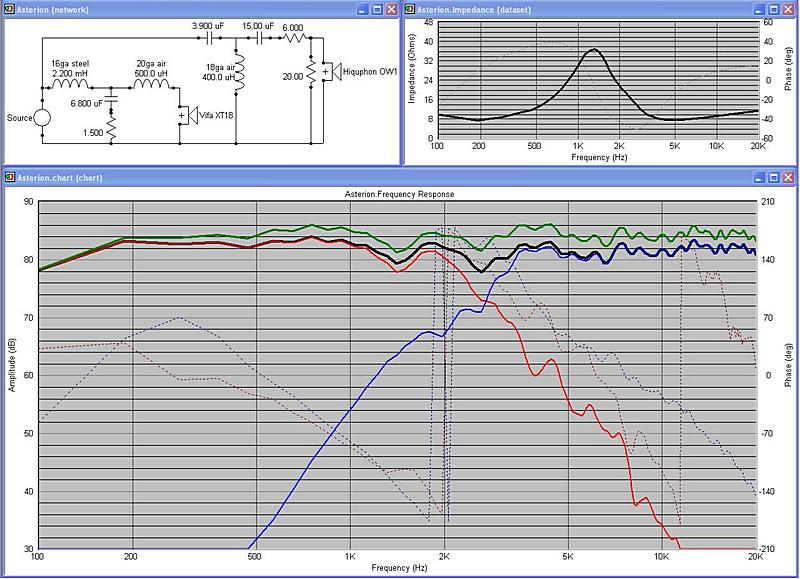 As you can see from the plot above, the overall sensitivity of this design has gone down by a few dB but I find that the tonal balance is much better partially due to the increased bass presence and partially due to the changes in the shape of the tweeter response relative to how it used to be. These speakers are now much more enjoyable to listen to overall and are quite impressive considering that they are two way speakers yet can almost be considered a full range design based on the bass extension. The main limitation of them is in the overall power handling and maximum output level due to excursion limits with the woofer when very deep bass notes are present. Below is a picture of the crossover layout that I used with this new version. 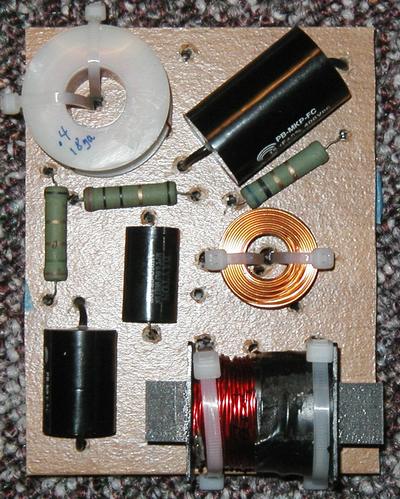 Recent Listening ImpressionsAfter reading my initial listening impressions which I wrote when I first finished this design, I've realized that I failed to mention a few key sonic characteristics of this design that makes it very appealing at least in my opinion relative to many other speakers that I've designed or heard. One thing that I did mention before was how they have a good balance of detail and smoothness which makes them sound great with a wide range of music. I would have to say that they are even a bit more listenable now that the bass is stronger yet they don't sound bloated or muddy. Also, by reducing the tweeter presence in the 5kHz region vocals sound much more balanced to me with less edge and breath yet still detailed. The characteristic that I find most attractive with these speakers is the way that they place instruments within the soundstage. They produce a very wide and deep soundstage presence but have a way of placing different instruments within the soundstage so that you can distinguish them very easily as opposed to them being crowded on top of each other as I've experienced with a few other designs. In my opinion, this makes them less fatiguing with a wider range of music because I often find that some speakers can be distracting if the music contains a lot of instruments, especially in the midrange region, that make it difficult to discern each instrument within the soundstage. I've found that almost all speakers can sound decent with minimalist recordings but as the number of instruments increases, some speakers can become fatiguing. I usually group soundstage and imaging characteristics together based on my definition that the soundstage describes where the instruments are placed while imaging defines how well they are focused within the soundstage. Some speakers that have a wider and deeper soundstage often sacrifice imaging a bit because instruments can become smeared within the soundstage but the Asterion design is able to produce a focused image of each instrument while placing each instrument in a wider and deeper soundstage area. I'll have to spend more time listening to these speakers but I feel that they sound better than ever now and this is the first time that I've had them set up as primary, front speakers and didn't have the urge to replace them with one of my other three way designs (Alpheus MkII/Dionysus) that I usually prefer.Speaker Workshop Project FileThe Speaker Workshop project file for this design is now available for download: Asterion 2009.swd. This project file includes gated measurements for the drivers taken on axis with the tweeter, each at a distance of about 1 meter. There's also a crossover network simulation based on the updated crossover version along with response data based on the older crossover version (all responses labeled with a .1 suffix are basd on the older crossover version but you could also develop a crossover network based on the older topology in order to compare). The file is about 2 MB so be patient if you have a slower connection.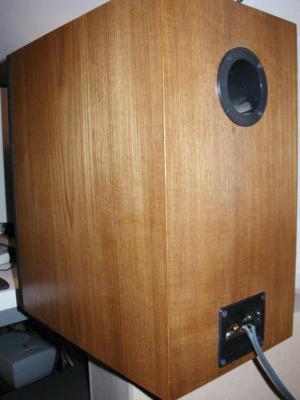
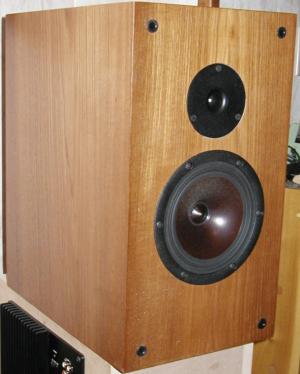
|
